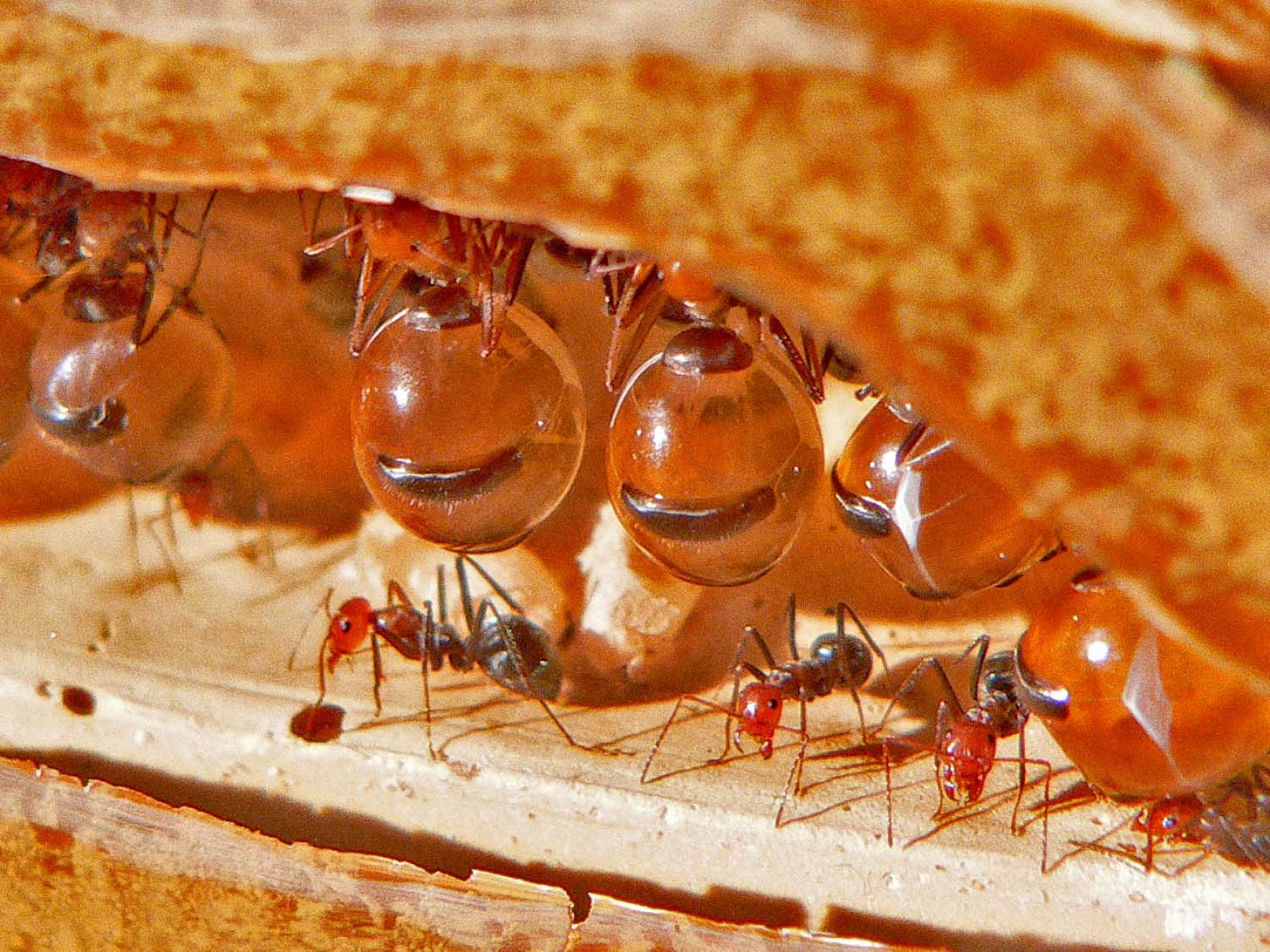There is a desert-dwelling ant in Australia that lives off the nectar of mulga trees1. Animals which rely on flower nectar in regions that get extremely cold or dry must have some means of storage for when times are lean.
The Australian honey pot ant has specialized workers called repletes which function as living larders. They become fully engorged with nectar, to the size of a grape, and hang from the roof. These specialized honey pots are almost totally inactive so they consume little honey to sustain their energy.
The small dark spots on their inflated honey sacs are the hard plates that protect the body of a normal ant. The membrane between those plates stretches.
Workers visit the honey pots when there is little food to be found above ground. They stimulate the repletes to regurgitate food. Other workers groom and clean the larders. During times of plenty, workers bring nectar down and feed it to the repletes.23
AntWiki.org calls it a “social stomach”, which sounds like a new iPhone app.
Their nests are about 4 feet below the surface of the ground. Indigenous Australians dug them up and ate them. They’ve featured on chef Renee Redzepi’s menu.
There are several ant species that have a replete caste.45 The ones in the David Attenborough video and in Rene Redzepi’s photo appear to be carpenter ants Camponotus inflatus.
Australia has the red honey ant Melophorus bagoti.67
Myrmecocystus mexicanus lives in the American Southwest and Mexico8.
Is it a prestigious position to be a honey pot for your colony? Seems like a pretty cushy job. Are they coerced into being still? Do they always feel bloated?
Nobody should tell Winnie the Pooh about these.
https://en.wikipedia.org/wiki/Acacia_aneura mulga tree in Australia
Wild Places, Season 1, Episode 1, Outback Deserts. Magellan TV Documentaries 2019
https://www.youtube.com/watch?v=5rwDdWBIXIg David Attenborough
https://antwiki.org/wiki/Repletes replete caste
https://en.wikipedia.org/wiki/Honeypot_ant#Genera list of species with honey pots
https://en.wikipedia.org/wiki/Melophorus_bagoti red honey ant in australia
https://www.hindawi.com/journals/psyche/2010/435838/ academic paper on nest relocation
https://antwiki.org/wiki/Myrmecocystus_mexicanus honey pot ant in america



